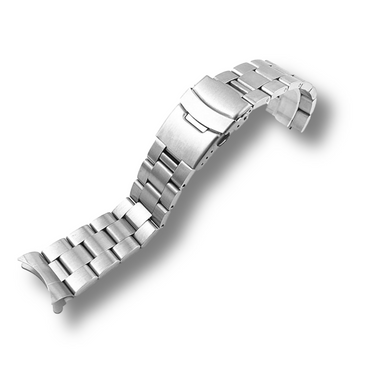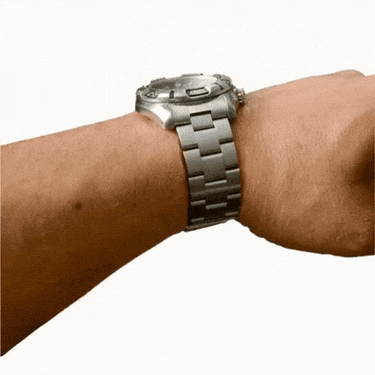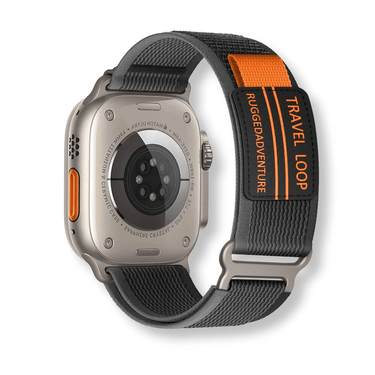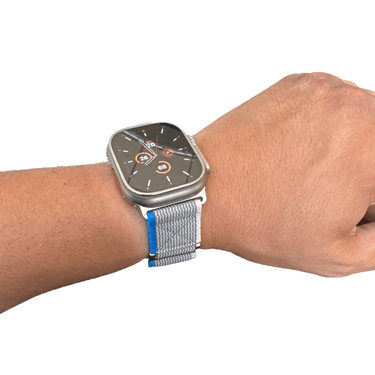The Need for Watch Winders: A Brief Introduction to the History of Automatic Watches
Before we dive into the science behind watch winders, let's first take a step back to understand the need for them. The invention of automatic or self-winding watches in 1770 by Swiss watchmaker Abraham-Louis Perrelet was truly groundbreaking. This innovation allowed watches to wind themselves using the natural movements of the wearer's wrist, eliminating the need for manual winding.
As time went on and technology advanced, automatic watches became more popular. However, there remained a problem that many collectors faced - when not worn regularly, an automatic watch would stop running and require manual winding again.
For someone with an extensive collection of luxury timepieces or a busy lifestyle that didn't allow for daily wear of each watch in rotation, this could become tedious and time-consuming. This is where watch winders come in - devices designed to mimic natural wrist movement and keep automatic watches running even when not being worn.
But how exactly do they work? Let's explore the science behind these machines.
The Basics of Automatic Watches
To understand how watch winders work, we must first understand how automatic watches work. At its core, an automatic movement is a mechanical movement that winds itself using a rotor that oscillates back and forth with arm movement.
As you go about your day wearing your automatic watch on your wrist, the rotor spins within the movement and winds up the mainspring inside which stores energy used to power the watch. The motion caused by walking or other activities provides enough power to keep your watch ticking.
However, if you don't wear your automatic watch regularly enough or leave it sitting unused for extended periods, it will eventually run out of energy and stop functioning entirely. This is where a quality watch winder comes in handy.
The Importance of Watch Winders
If you're a collector of automatic watches or simply have one or two that you don't always wear, a watch winder is an essential tool to keep them running smoothly and accurately. A good quality watch winder will mimic the natural wrist movements that wind up your timepiece, ensuring it stays wound even when not being worn.
But why not simply wind the watch manually? While this is certainly an option, manual winding can be tedious and time-consuming.
Additionally, some automatic watches have complex complications and functions that require specific winding programs to maintain accuracy. In short, a quality watch winder takes the hassle out of keeping your automatic watches wound while also providing peace of mind that they are being kept in optimal condition.
The Basics of Automatic Watches
Automatic watches, also known as self-winding watches are timepieces that do not require winding by hand. Instead, they use the natural movement of the wrist to wind themselves, thanks to a complex mechanism inside the watch. The main component responsible for this unique feature in automatic watches is called the rotor.
The rotor is a small metal weight that is attached to an axle and swings freely back and forth inside the watch. The rotor moves with every movement of your wrist, creating energy that is transferred through gears, which then winds the mainspring.
The mainspring stores power which drives the watch's movements. It's worth noting that automatic watches can also be manually wound if necessary and can typically store power for 24-48 hours without being worn on your wrist.
How Automatic Watches Work
Automatic watches have a complex set up of gears and springs that work together in perfect harmony to keep accurate time. As mentioned earlier, it starts with a mainspring that stores energy when it's wound up by either hand or wrist movement through a rotor. This stored energy is then transferred to an escapement system which controls how fast or slow the gears turn inside the watch.
The escapement releases small amounts of energy at precise intervals allowing for accurate timekeeping. To regulate accuracy over long periods of use, most automatic watches incorporate an adjustable balance wheel which works in conjunction with hairsprings and other small mechanisms such as shock-resistant systems or anti-magnetic covers to reduce external disturbances on accuracy such as knocks or magnetism from computer screens or magnets nearby.
The Role of Rotor in Winding Your Watch
The rotor serves as one half of an oscillator system along with inertia weights (the oscillating weight) that balance out the rotor, which helps regulate the energy given off by winding the watch. This creates a natural swinging motion for the rotor that produces kinetic energy, which is then transferred into potential energy as it turns and winds the mainspring.
It's important to note that while automatic watches are self-winding, they do need regular maintenance to keep them running accurately. This includes cleaning and lubricating of tiny gears and levers as well as checking for any abnormalities in timing or accuracy.
Automatic watches are marvels of engineering that use a unique mechanism to harness human movement to power timekeeping. If you own an automatic watch, it's worth investing in a good quality watch winder to maintain accuracy and ensure longevity.
Understanding Watch Winders
Types of Watch Winders
If you have more than one automatic watch, you will need a watch winder. A watch winder is a device that keeps your self-winding timepiece running when it's not being worn. There are three basic types of winders: single, double, and quad.
A single automatic watch winder can only hold one watch at a time. This is suitable for those who only own one automatic timepiece, or for those who want to keep their watches separated.
If you have two watches that require winding, then you'll need a double winder. The double automatic watch winder is the most common type of winder because it can hold two watches at once.
It's perfect for people who own multiple automatic watches and want to keep them both wound and ready to wear at any moment. If you're an avid collector with several prized pieces in your collection, then the quad winder may be suitable for your needs.
How They Mimic Natural Wrist Movement
Automatic watches rely on natural wrist movement to wind themselves up. When we wear our watches all day long and our wrists move naturally throughout the day, they keep our self-winding timepieces running without issue.
However, if we leave these valuable items unworn for too long or spend extended periods sitting still with our arms hanging down at our sides, the movements inside them will slow down or stop altogether. Watch winders mimic this natural wrist motion by rotating the watch in different directions and speeds around an axis point to simulate human movement patterns.
The movement pattern varies depending on your specific brand and model of watch because each requires different levels of winding. It's important to note that not all winders are created equal when it comes to mimicking natural wrist movement accurately.
Cheaper models may spin too fast or not rotate in the right direction, leading to damage or decreased accuracy over time. It's important to invest in a quality winder that can mimic your wrist's natural movements accurately and won't cause harm to your valuable timepiece.
The Science Behind Watch Winders
The Importance of Rotation Direction and Speed
Let's talk about the direction of rotation. You might think it doesn't matter which way your watch winder turns, but you're wrong.
Clockwise is always better than counterclockwise. Why?
Because most automatic watches are designed to wind in a clockwise direction. If you wind them counterclockwise, you risk damaging the delicate internal mechanisms.
Now, let's move on to speed. Some watch winders come with adjustable winding speeds, while others only have one speed setting.
The ideal speed for your automatic watch depends on its size and weight. A heavier watch requires more power to wind than a lighter one, so it needs a higher winding speed.
Different Winding Programs for Different Watches
Did you know that different watches require different winding programs? It's true! For example, Rolex watches need a different program than Seiko watches because they have different internal mechanisms and power reserve capacities.
A good quality watch winder will come with multiple winding programs to accommodate different types of watches. These programs usually include settings for clockwise or counterclockwise rotation, as well as the number of revolutions per day (RPD) needed to keep the watch wound properly.
So, don't make the mistake of thinking that all watch winders are created equal. Investing in a high-quality winder with customizable winding programs will ensure that your automatic watch stays in top working condition for years to come.
Insinuation: "Why Your Automatic Watch Deserves the Best"
If you're going to invest in an automatic watch - whether it's a Rolex or a Seiko - then it deserves the best possible care and maintenance. This includes using a high-quality watch winder that is specifically designed for your type of timepiece. Don't settle for a cheap, generic watch winder that might damage your precious watch.
Instead, invest in a top-of-the-line winder that offers customizable winding programs and rotation directions to keep your automatic watch running smoothly and accurately. Trust me, your watch (and your wallet) will thank you in the long run.
Choosing the Right Watch Winder
The Importance of Investing in a Quality Watch Winder
Let's be honest here, if you're the proud owner of a luxury timepiece, you don't want to skimp on the essentials. And a good quality watch winder is definitely an essential when it comes to keeping your automatic watch running smoothly.
Investing in a cheap, poorly made winder may seem like a cost-effective option at first, but it will likely cause more harm than good to your prized possession. A cheap watch winder can cause damage through improper winding techniques or by overloading and burning out the motor.
If you're going to spend thousands on a timepiece, why would you want to risk damaging it with a subpar winder? Furthermore, investing in a quality watch winder can actually save you money in the long run by reducing the frequency of repairs needed for your watch.
Factors to Consider When Selecting a Watch Winder
When choosing the right watch winder for your needs, there are several factors that should be taken into consideration. Firstly, you should consider how many watches you own and whether or not they require different winding programs. A single-watch winder may suffice if you only have one automatic timepiece that requires standard rotation direction and speed; however, if you own multiple watches with different winding requirements then investing in a multi-watch winder would be wise.
Secondly, consider how often you wear your watches and how long they sit idle between wears. If you wear your watches regularly and only take them off for short periods of time then slower rotation speeds may be suitable for your needs; however, if your watches sit unused for extended periods of time then faster rotation speeds may be necessary.
Think about the overall quality of the winder itself. Look for features such as programmable settings, quiet motor operation, and proper cushioning to protect your watch from damage during winding.
The Final Verdict
A quality watch winder is an investment that any serious automatic watch collector should consider. While it may seem like an unnecessary expense at first, a good winder can save you money in the long run and protect your timepieces from damage.
When selecting a winder, take into consideration the number of watches you own, their individual winding requirements, and the overall quality of the winder itself. Don't skimp on an essential item for your luxury timepiece collection - invest wisely!
Maintaining Your Watch Winder
The Importance of Proper Maintenance
So, you've invested in a top-of-the-line watch winder to keep your luxury timepiece running smoothly. Congratulations! However, buying a quality winder is only half the battle.
If you want to keep your prized possession in tip-top shape, it's crucial that you maintain your watch winder properly. Without regular maintenance, your watch winder will eventually break down, leaving you with an expensive paperweight and a damaged watch.
Don't let this happen to you! Here are some tips on how to keep your watch winder running smoothly and efficiently:
Cleaning Your Watch Winder
The first step in maintaining your watch winder is keeping it clean. Over time, dust and debris can build up inside the winder, causing it to malfunction. To prevent this from happening, it's important to clean your watch winder regularly.
To clean your watch winder, start by unplugging it from the wall. Then remove any watches that might be inside.
Next, use a soft cloth or brush to gently wipe down the exterior of the winder and remove any dust or debris. Be sure not to get any water or cleaning solution inside the winder as this could damage its delicate mechanism.
Oil Changes for Your Watch Wnder?
Believe it or not, just like a car needs an oil change every once in a while; so does your automatic watch winder! The parts that make up a watch winding mechanism need proper lubrication with high-quality oil designed for watches.
However don't go thinking you should do this yourself without professional help – disassembling any aspect of an automatic timepiece can lead to damaging its precision components which will completely undermine all its magnificent features : Proper maintenance is key when it comes to keeping your watch winder running smoothly and efficiently.
Keep it clean, periodically get it serviced by a qualified professional, and avoid at home repairs or modifications. Remember that investing in a quality watch winder is an investment in your timepiece's longevity, so take care of it and enjoy the benefits for years to come!
Conclusion
Automatic watch winding is an essential process for any watch enthusiast who wants to keep their timepieces running smoothly and accurately. The science behind automatic watch winding is based on the natural motion of the user's wrist, mimicked by watch winders, and involves careful consideration of rotation direction, speed, and winding program.
Choosing the right watch winder can be a daunting task with so many options on the market claiming to fit all watches. However, it's important to consider factors such as size, rotation direction and speed options, power source, noise level, and build quality when selecting a watch winder.
Investing in a high-quality winder may seem expensive at first but can protect your luxury timepieces from damage caused by improper winding or lack of use. Maintaining your watch winder is equally important to ensure it runs properly for years to come.
Regular cleaning and lubrication of moving parts are recommended to prevent wear and tear that can result in malfunctioning or even damage to your timepiece. In short, if you want your automatic watches to last for generations while keeping their accuracy intact then investing in a good quality watch winder should be considered.
It may require some initial investment but it will pay off in the long run. As with anything mechanical or electronic that you rely on daily or regularly take care of it with proper maintenance practices like cleaning and lubrication for continued longevity!

























